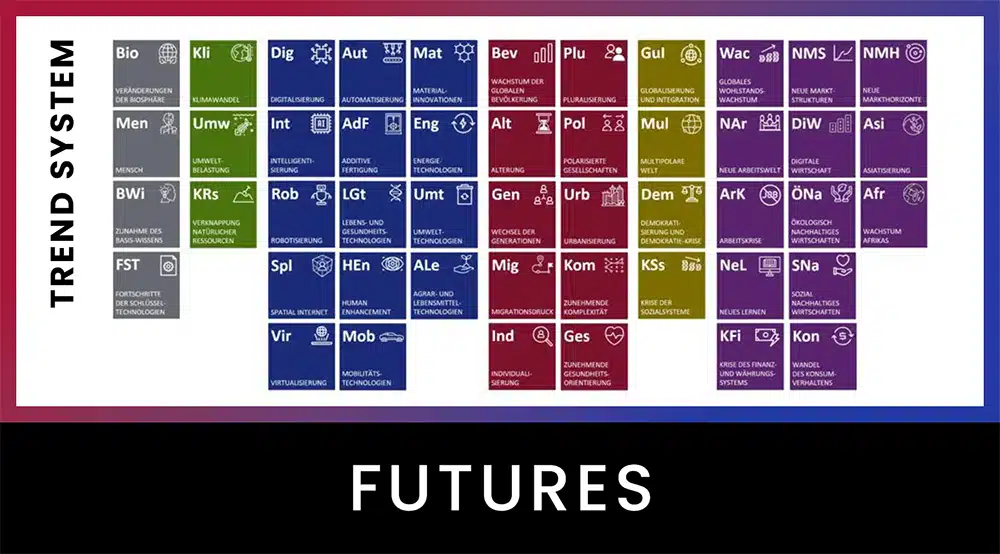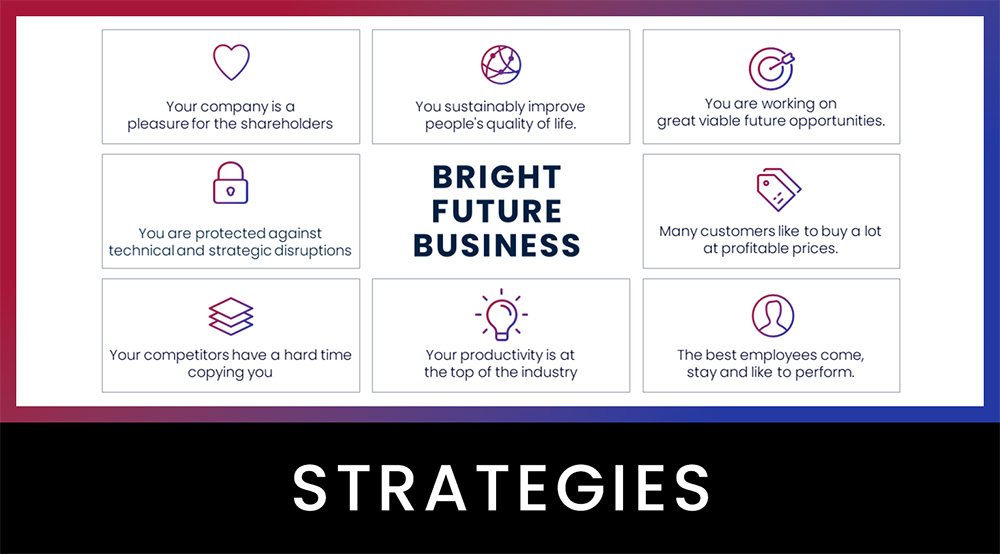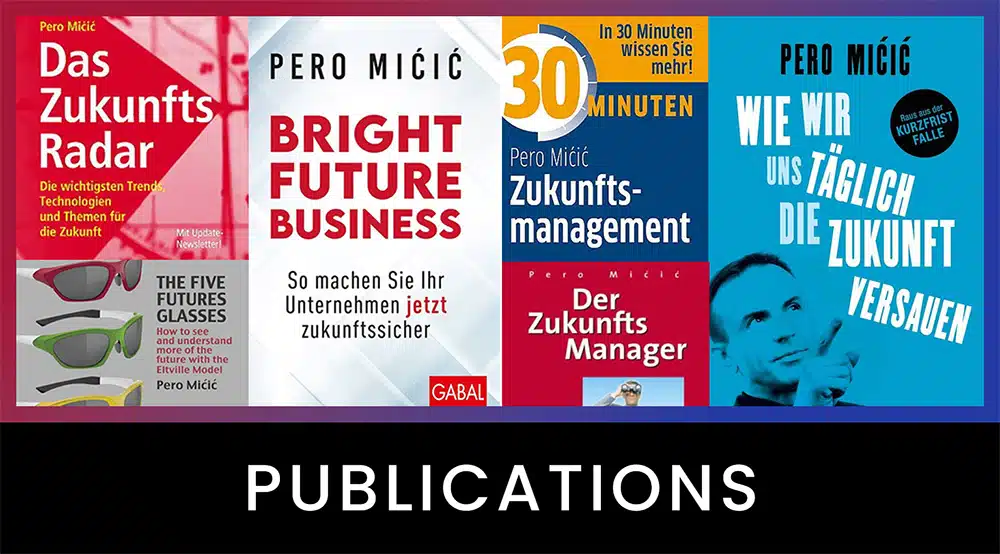In retrospect, the early 2020s will mark the beginning of the end of individual motorized transport and the internal combustion engine. Massive changes are in store for the automotive industry, as the mobility world of the 2030s will be a different, radically data-driven and service-oriented one. In the worst-case scenario, German automakers are suppliers to the major U.S. IT giants.
Let’s start with some good news
Car manufacturers have posted one sales record after another in recent years. Between 2016 and 2024, the number of vehicles sold per year is expected to increase by a further quarter, from 92 million to 114 million. So where exactly is the problem?
Disruption fears as a driver of exponential progress
The acceleration of technical progress is putting companies that want to help shape the mobility world of the future in a visionary way under ever greater pressure to innovate. It is becoming increasingly critical to find answers to questions such as:
- Which technology will achieve the ‘performance’, ‘penetration’ or ‘price’ to be mass-market ready and when? And how quickly will it already be outdated or obsolete again?
- From which direction do disruptive changes threaten?
- Which new players are entering the market?
- How will digitization affect our business model?
The threat of ‘disruption’ will be strategically
- anticipated
- adapted
Because the automakers want to secure as large a slice of the future pie as possible, they are eagerly stirring the pot. Thus, fear of the threat of outside disruption becomes the driver of exponential progress that everyone, including incumbents, is pushing. The consequence is that
- the changes are coming faster and more widespread than expected
- companies cannibalize their traditional core business themselves.
It is not mobility itself that is being disrupted
What exactly does disruption mean? The electric motor is no more disrupting mobility than the CD is disrupting the music industry. It wasn’t until the advent of the MP3 and the digital distribution of music through platforms to today’s streaming services like Spotify that the music business was completely restructured. Is this also conceivable in the mobility sector? The effect of ‘mobility’ can be achieved by various means, but it is always ‘hardware’-based, i.e. it cannot be digitized, but only digitally optimized (efficiency) and digitally extended (services).
Communication technologies that eliminate the need to physically travel a distance to exchange information are a special case. From letters to phone calls to video conferencing, however, this is nothing new. We want to neglect it here, even if AR and VR applications could substitute a certain share of the mobility volume.
The good news is: More and more people will travel greater and greater distances. The world’s population will continue to grow, as will the middle classes in developing and emerging countries. Mobility is therefore on the rise. Another piece of good news is that the car will dominate mobility in the future to a far greater extent than in the past. So where exactly is the problem? In the future, less is more! Fewer cars, more mobility…
Maximum efficiency through AI
“More with less” means higher efficiency. A more efficient mobility system than fleets of autonomously driving electric vehicles, whose utilization and routes are optimized with the help of artificial intelligence and which offer highly flexible door-to-door mobility for every passenger, is actually inconceivable. An exception is the subway as a means of mass transportation in very large cities, which can transport a large number of people to or from their workplace at peak times. It is not possible today to make a precise forecast as to what proportion of autonomously driving electric cars will be accounted for by individual mobility and public/shared mobility respectively. This depends mainly on legal regulations and on our attitude towards cars and driving. However, it is very likely that ‘Mobility-as-a-Service’ will prevail because, at some point, owning a car will no longer offer a significant benefit for the individual, but ‘Mobility-as-a-Service’ will offer a major benefit for the general public:
- Lower resource consumption
- LowerCO2 emissions
- Less noise
- No traffic jams
- Higher traffic safety
- Lower mobility costs
- Time saving during the journey
- Convenience
- Possibility of conversion of parking spaces
Due to the high levels of particulate matter and nitrogen oxide pollution, diesel driving bans are currently being discussed in many German inner cities. The German Environmental Aid Association is taking legal action against 28 cities for failing to comply with EU limits. Retrofitting the vehicles would cost billions. But the pressure is on: in the EU, 400,000 people die prematurely each year as a result of high levels of air pollution.
Around 80 percent fewer cars
Efficient and environmentally sustainable, autonomously driving, electrically powered and shared vehicles could, for example, reduce the vehicle population in the U.S. from 247 million today to 44 million in 2030, according to a recent study. But that would also mean: Money will no longer be earned with hardware, but in the new multi-trillion dollar market: ‘Mobility-as-a-Service’. Existing business models are being replaced by new ones – with far-reaching consequences for manufacturers, suppliers, dealers and workshops. The successful companies will be those that have the digital expertise to build and operate the necessary infrastructure, have control over the data, and operate the platforms through which value-added services based on this data are offered.
The bad news
At the moment, these competencies do not lie with the established car manufacturers, but with newcomers like Tesla and IT groups like Google, Apple & Co.
You can download the white paper How to survive the mobility disruption: 6 strategy archetypes and 8 tactical moves if your business is threatened by the next era of mobility here for free.
Follow these links as well:
► The Future Strategy Program for SMEs
► Free video crash course THE FUTURE OF YOUR BUSINESS
► BUSINESS WARGAMING for robust business and future opportunities
► KEYNOTES by Pero Mićić for your employees and customers
Have a bright future!






























